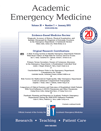
ACADEMIC EMERGENCY MEDICINE
Scope & Guideline
Elevating Research in Critical Care
Introduction
Aims and Scopes
- Clinical Research and Trials:
The journal emphasizes original research, including randomized controlled trials, observational studies, and meta-analyses that investigate clinical practices, treatment efficacy, and patient outcomes in emergency settings. - Innovative Care Models:
Research focusing on the development and evaluation of innovative care models aimed at improving emergency department efficiency, patient satisfaction, and care quality, including integrated care approaches and telemedicine. - Health Disparities and Equity:
A significant focus on understanding and addressing health disparities in emergency care, including studies that explore the impact of race, ethnicity, and socioeconomic status on patient experiences and outcomes. - Education and Training:
The journal also covers educational research aimed at improving training for emergency physicians and other healthcare professionals, including the implementation of simulation-based training and curriculum development. - Public Health and Policy:
Research related to public health issues, including the impact of policies on emergency care delivery and the role of emergency departments in addressing broader health challenges such as substance use disorders and mental health crises.
Trending and Emerging
- Integration of Technology in Care:
There is a growing focus on the integration of technology such as artificial intelligence and machine learning in emergency medicine, particularly in diagnostic processes and patient management, enhancing decision-making and operational efficiency. - Mental Health and Substance Use Disorders:
An increasing number of studies are addressing the intersection of emergency medicine with mental health and substance use disorders, highlighting the need for comprehensive care strategies that encompass both physical and mental health. - Patient-Centered Care and Shared Decision-Making:
Research emphasizing patient-centered approaches and shared decision-making is on the rise, reflecting a shift towards involving patients more actively in their care and respecting their preferences and values. - Equity and Social Justice in Healthcare:
There is a burgeoning interest in addressing social determinants of health and promoting equity in emergency care, with numerous studies examining disparities in access and outcomes among diverse populations. - Impact of COVID-19 on Emergency Care:
The pandemic has catalyzed research into the effects of COVID-19 on emergency care systems, patient management, and the adaptation of emergency services to meet evolving public health needs.
Declining or Waning
- Traditional Diagnostic Techniques:
There has been a noticeable decrease in studies focused on traditional diagnostic techniques that do not incorporate advanced methodologies, such as machine learning or point-of-care ultrasound, indicating a move towards integrating technology in diagnostics. - Basic Emergency Medicine Protocols:
Papers centered on basic emergency protocols and guidelines that have been established for years are becoming less frequent, as the focus shifts towards more complex and nuanced care strategies. - Emergency Medicine Workforce Issues:
While workforce issues remain important, the volume of research specifically addressing staffing shortages and burnout in emergency medicine has declined, possibly due to a saturation of existing literature on these topics. - Standardized Treatment Approaches:
The journal is seeing fewer studies advocating for standardized treatment protocols without consideration for individual patient factors or personalized medicine, reflecting a trend towards individualized patient care. - Historical Perspectives in Emergency Medicine:
Research that focuses on historical perspectives or retrospective analyses of emergency medicine practices is less common, as the field increasingly emphasizes innovative and forward-looking research.
Similar Journals

Emergencias
Advancing Emergency Care Through Innovative ResearchEmergencias is a prestigious journal in the field of Emergency Medicine, published by the Sociedad Española de Medicina de Urgencias y Emergencias (SEMES). This journal has established itself as a vital platform for sharing cutting-edge research and practical insights, ranking in the top 20 of emergency medicine journals according to Scopus, with a commendable 82nd percentile performance. Since its inception, it has maintained a commitment to advancing knowledge and practice in emergency care, making contributions essential for both researchers and practitioners. The journal features diverse articles covering clinical guidelines, innovative techniques, and case studies, reflective of its importance in guiding timely medical interventions. As an open access publication, it encourages widespread dissemination of knowledge, fostering collaboration and understanding across the global emergency medicine community. Emergencias continues to publish high-quality research until 2024, making significant strides in enhancing emergency healthcare practices in Spain and beyond.
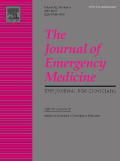
JOURNAL OF EMERGENCY MEDICINE
Fostering innovation in urgent medical practices.The JOURNAL OF EMERGENCY MEDICINE, published by Elsevier Science Inc, is a premier peer-reviewed journal dedicated to advancing the field of emergency medicine. Since its inception in 1983, this journal has served as an essential resource for researchers, clinicians, and students, contributing significantly to evidence-based practices and innovations in the emergency medical landscape. With an impressive ranking of 43 out of 109 in the field of Emergency Medicine according to Scopus, and a current impact factor placing it in the Q2 quartile, this publication is recognized for its rigorous scholarly content and relevance in tackling contemporary issues in emergency care. Although it does not offer open access, the journal remains widely respected for its contribution to the global emergency medicine community, fostering new ideas and discussions that drive the field forward. For those seeking to stay at the forefront of emergency medical research, the JOURNAL OF EMERGENCY MEDICINE is an invaluable addition to your academic endeavors.

International Journal of Emergency Medicine
Elevating standards in emergency medical practice.The International Journal of Emergency Medicine, published by BMC since 2009, stands at the forefront of research in the field of emergency medicine. With an outstanding impact factor and recognized as a Q1 journal in the 2023 category of Emergency Medicine, it holds a prominent Scopus Rank of #18 out of 109, placing it in the 83rd percentile for quality research. This open access journal, based in the United Kingdom, is dedicated to disseminating high-impact studies to a global audience, allowing professionals, researchers, and students to access innovative findings without barriers. The journal's objectives are to advance the field through comprehensive articles, rapid communications, and critical reviews that address the most pressing challenges faced in emergency care. By fostering collaboration among experts in the field, International Journal of Emergency Medicine is essential for anyone committed to improving practices and outcomes in emergency medicine from 2009 through to 2024.
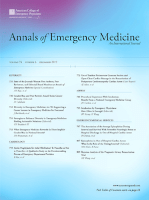
ANNALS OF EMERGENCY MEDICINE
Leading Innovations in Critical Care ResearchANNALS OF EMERGENCY MEDICINE is a leading peer-reviewed journal dedicated to the advancement of emergency medicine, published by MOSBY-ELSEVIER. With an impressive impact factor and a prestigious ranking of Q1 in the field, this journal serves as an essential platform for disseminating innovative research findings, clinical practices, and policy developments within emergency medicine. Recognized for its high-quality contributions, it ranks #6 out of 109 in Scopus's Emergency Medicine category, placing it in the top 6% of journals in the field. Since its inception in 1980, ANNALS OF EMERGENCY MEDICINE has consistently provided valuable insights to researchers, practitioners, and students, fostering a deeper understanding of emergency care challenges and solutions. While the journal is not open access, it remains a cornerstone for those seeking to stay at the forefront of emergency medicine advancements, providing access to critical research within the field.
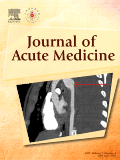
Journal of Acute Medicine
Shaping the future of critical and emergency medicine.Journal of Acute Medicine is a pivotal platform for disseminating cutting-edge research within the fields of Critical Care and Intensive Care Medicine and Emergency Medicine. Published by the Taiwan Society of Emergency Medicine in the Netherlands, this journal serves as a vital resource for healthcare professionals and researchers devoted to advancing acute medical practice. With an ISSN of 2211-5587 and an E-ISSN of 2211-5595, the journal features a collection of high-quality articles that focus on the latest developments and challenges facing emergency healthcare systems. Since its inception in 2011, the journal has achieved a respectable Q3 ranking in both critical care and emergency medicine categories, demonstrating its commitment to scholarly excellence. Although it currently does not operate as an open-access publication, the journal provides a critical forum for exchanging knowledge, fostering collaborations, and enhancing clinical practices, ensuring that it remains an essential read for those involved in acute medical care.
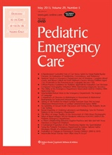
PEDIATRIC EMERGENCY CARE
Empowering Excellence in Pediatric Emergency CarePediatric Emergency Care, published by Lippincott Williams & Wilkins, serves as a vital resource within the fields of Emergency Medicine, Pediatrics, and Child Health. Established in 1985, this journal offers a platform for the dissemination of impactful research, offering critical insights for healthcare professionals dedicated to improving emergency care for children. With an impressive impact factor, it ranks in the Q2 category in Emergency Medicine and Pediatrics, highlighting its significance in advancing clinical practices and outcomes. Although not an open-access journal, it provides extensive access options to ensure the research is available to a broad spectrum of readers. The journal's rigorous standards and commitment to excellence make it an essential tool for researchers, practitioners, and students aiming to stay at the forefront of pediatric emergency care advancements.
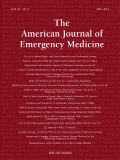
AMERICAN JOURNAL OF EMERGENCY MEDICINE
Transforming Urgent Care with Groundbreaking StudiesThe American Journal of Emergency Medicine, published by W B Saunders Co-Elsevier Inc, stands as a premier platform for the dissemination of high-quality research in the field of emergency medicine. With the ISSN 0735-6757 and E-ISSN 1532-8171, this esteemed journal features contributions that shape clinical practices and enhance patient care in urgent medical scenarios. Since its inception in 1983, the journal has garnered a notable Q1 ranking in Emergency Medicine and a Q2 ranking in Medicine (miscellaneous) for 2023, reflecting its significant impact in the field, as denoted by its Scopus rank of 12 out of 109, placing it in the 89th percentile. Researchers and practitioners alike benefit from the rigorous peer-review process, ensuring that only impactful studies are published, even as the journal maintains a non-open access model, allowing for selective availability of pioneering research. By fostering academic dialogue and advancing knowledge, the American Journal of Emergency Medicine plays a crucial role in addressing the dynamic challenges faced by healthcare professionals in emergency settings.
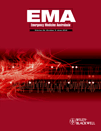
Emergency Medicine Australasia
Leading the Way in Emergency Medicine DiscoveriesEmergency Medicine Australasia, published by WILEY, stands as a premier journal in the field of emergency medicine, underlining its significance through its distinguished ranking as Q1 in Emergency Medicine and Q2 in Medicine (miscellaneous) as of 2023. The journal, which has been in circulation since 2004, provides a platform for high-quality research, clinical studies, and reviews that contribute to the advancements in emergency medicine practices. With a Scopus rank of 28 out of 109 in its category, it occupies a notable position within the medical community, boasting a 74th percentile ranking that reflects its impactful contributions to the field. Although it operates primarily on a subscription basis, Emergency Medicine Australasia is essential reading for researchers, practitioners, and students seeking to stay updated on the latest developments and methodologies in emergency care. This journal not only aims to disseminate critical knowledge but also fosters a collaborative environment for sharing innovations that improve patient outcomes and emergency services.
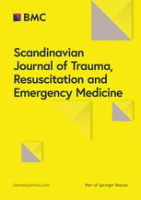
Scandinavian Journal of Trauma Resuscitation & Emergency Medicine
Unlocking New Frontiers in Critical Care and ResuscitationThe Scandinavian Journal of Trauma Resuscitation & Emergency Medicine, published by BMC, stands as a leading open-access platform dedicated to advancing the fields of trauma, resuscitation, and emergency medicine since its inception in 2008. With an ISSN of 1757-7241 and an impressive track record, this journal has established itself in the top quartile of critical care and emergency medicine, achieving Q1 rankings in both categories for 2023. Its Scopus rankings further underscore its importance, placing it among the top 11 journals in emergency medicine and the 23rd in critical care and intensive care medicine, signaling a strong impact within the academic community. As we converge toward 2024, the journal continues to provide researchers, clinicians, and students with valuable access to cutting-edge research and developments in the sector, contributing significantly to knowledge, practice, and policy in emergency care. Located in the heart of the United Kingdom, the journal remains dedicated to its mission of fostering innovation and dissemination of high-quality research, ensuring that vital medical advancements reach those who need them most.

Notfall & Rettungsmedizin
Exploring critical developments in emergency medicine.Notfall & Rettungsmedizin is a leading journal in the field of Emergency Medicine, published by Springer in Germany. With a focus on advancing the science and practice of emergency care, this journal offers a platform for original research, critical reviews, and case studies that address the latest challenges and innovations in the field. The journal ranks in the Q2 category of Emergency Medicine for 2023, reflecting its commitment to high-quality scholarship and impactful research, evidenced by its Scopus ranking of #51 out of 109, placing it within the 53rd percentile. Although it does not provide open access, the content is invaluable for researchers, healthcare professionals, and students engaged in emergency medicine. From its inception in 1999 to its continuous publication through 2024, Notfall & Rettungsmedizin remains a vital resource for disseminating knowledge and fostering professional development in emergency care worldwide.